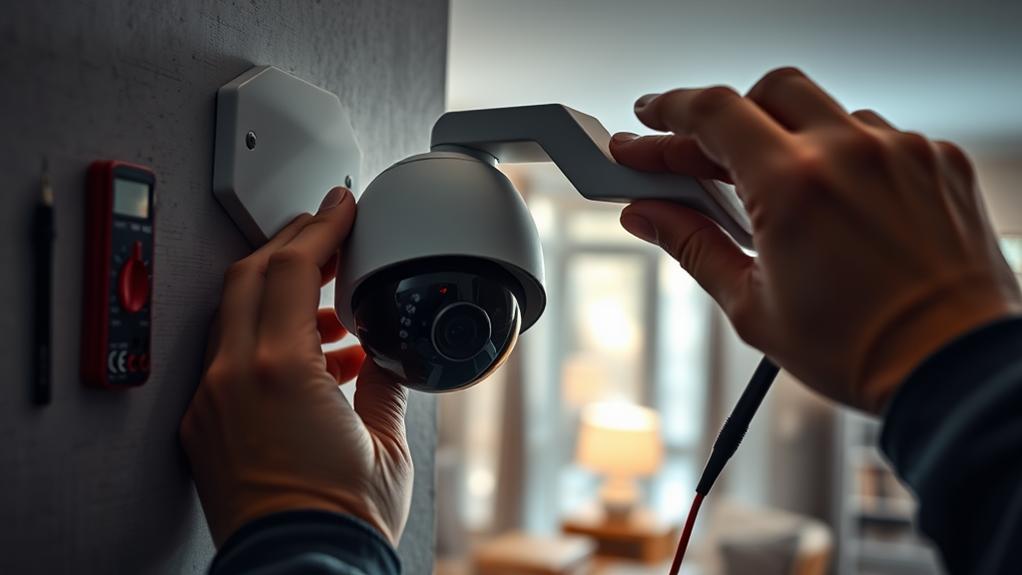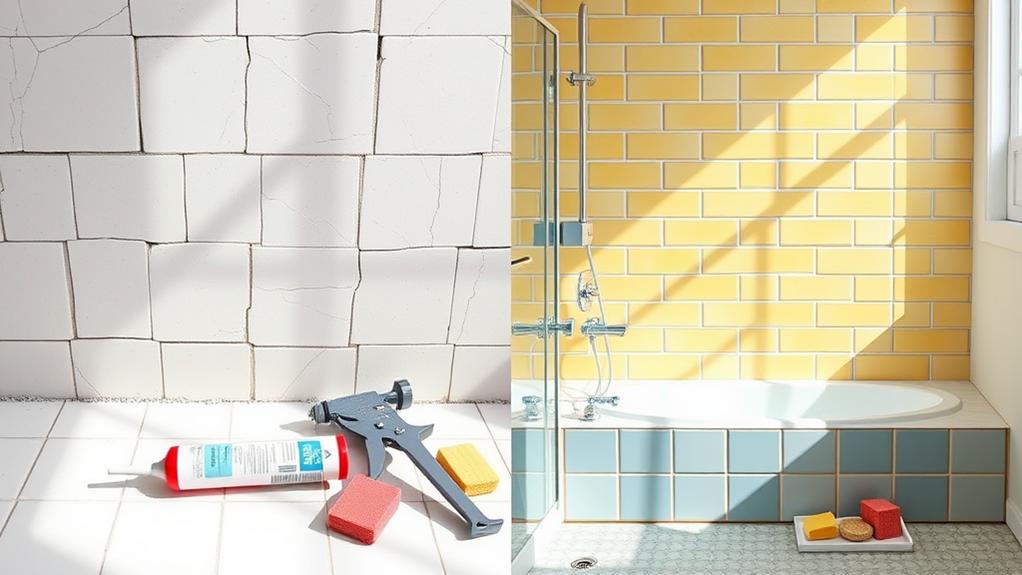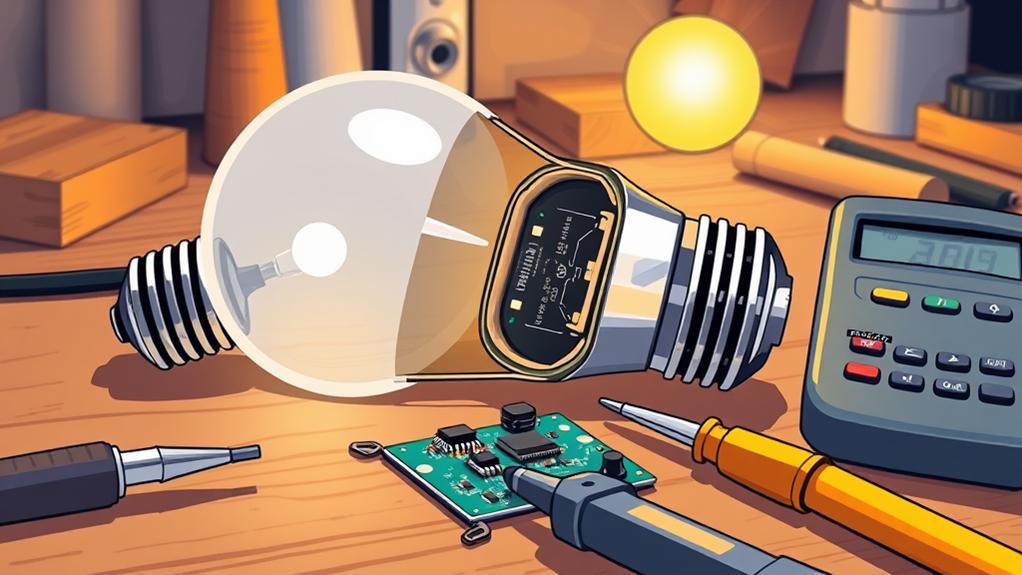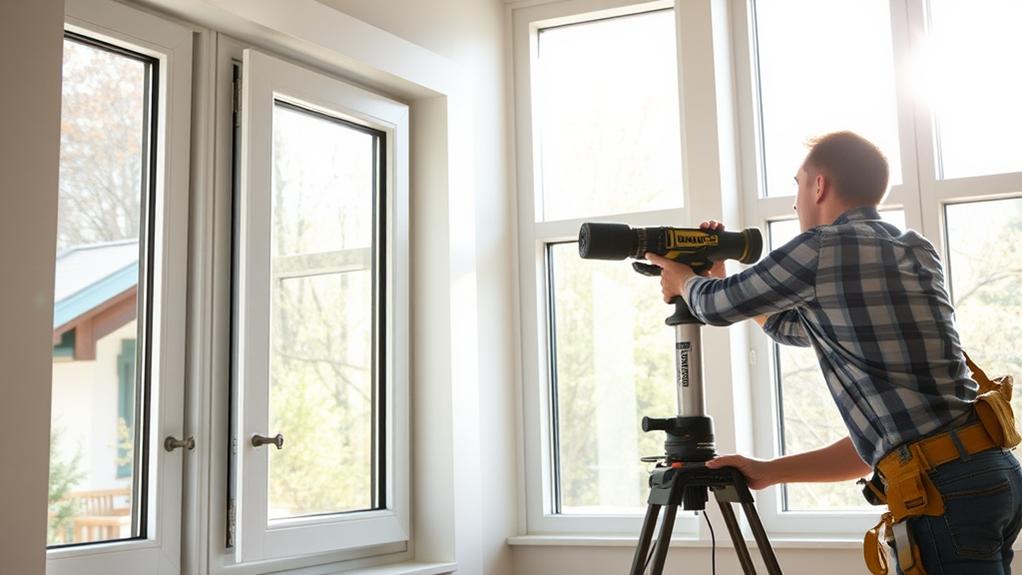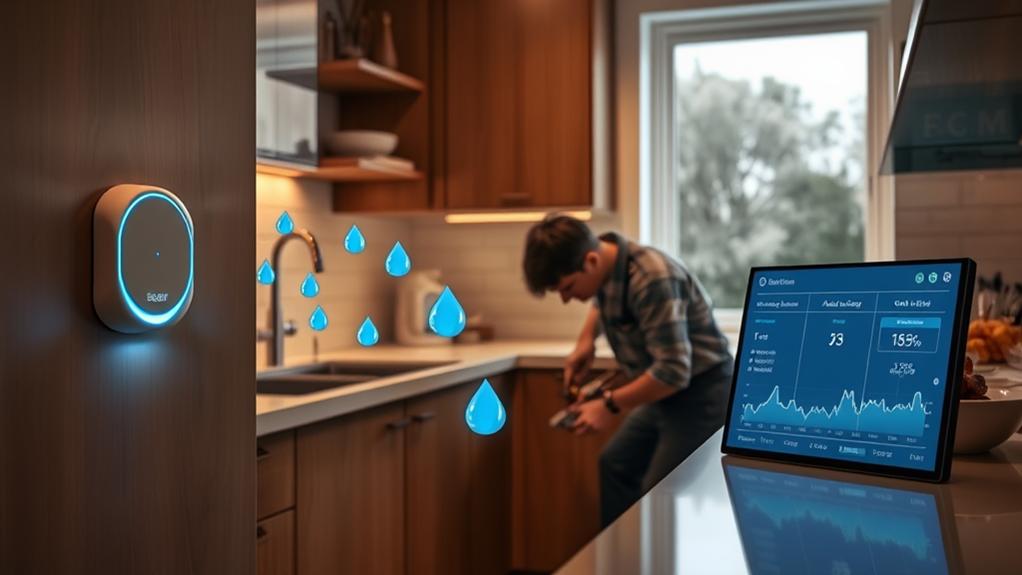Imagine you've just discovered that your smart home security camera isn't recording vital footage during a break-in. You might feel frustrated, wondering how to address the issue effectively. By understanding common problems like connectivity failures and power supply issues, you can take steps to troubleshoot the situation. However, what happens when basic fixes don't work? Exploring advanced repair techniques could be the key to restoring your system's reliability and ensuring your home remains secure.
Common Camera Issues
When your smart home security camera acts up, it can be frustrating, but knowing the common camera issues can help you troubleshoot effectively.
One frequent problem is connectivity issues. If your camera keeps disconnecting from Wi-Fi, check your router's signal strength and confirm that it's not too far away. Sometimes, interference from other devices can also disrupt the connection.
Another common issue is poor video quality. If your footage looks grainy or pixelated, it could be due to low lighting or an obstructed lens. Make sure the lens is clean and that there's adequate lighting in the area you're monitoring.
You might also experience issues with motion detection. If your camera isn't picking up movement, verify that the motion detection settings are correctly configured. Sometimes, the sensitivity might need adjusting.
Lastly, don't overlook firmware updates. If your camera isn't functioning as expected, check for updates, as manufacturers often release patches to fix bugs or enhance performance.
Basic Troubleshooting Steps
If you're facing issues with your smart home security camera, taking some basic troubleshooting steps can often resolve the problem.
First, check the power source. Verify your camera is plugged in properly or that its batteries are charged. A dead battery or loose connection can prevent your camera from functioning.
Next, verify your Wi-Fi connection. Make sure the camera is within range of your router and that your internet is working. You can do this by connecting another device to the same network. If the connection is weak, consider moving the camera closer to the router or using a Wi-Fi extender.
Once you've checked the power and connection, restart your camera. This can often reboot its system and solve minor glitches. Simply unplug it, wait a few seconds, and plug it back in.
Software and Firmware Updates
Keeping your smart home security camera updated with the latest software and firmware is essential for peak performance and security. Regular updates help fix bugs, improve functionality, and protect against vulnerabilities that hackers might exploit.
Here's why you should prioritize these updates:
- Enhanced Security: Updates often patch security loopholes, guaranteeing your camera remains safe from cyber threats.
- Improved Features: Manufacturers frequently add new functionalities that can enhance your user experience.
- Bug Fixes: Software updates address existing bugs that might hinder your camera's performance.
- Compatibility: Keeping your firmware current guarantees your camera works seamlessly with other smart home devices.
To check for updates, navigate to your camera's settings through the app or web interface. Setting your device to update automatically, if available, can save you time and hassle.
Hardware Inspection Techniques
Thorough hardware inspection is essential for maintaining the functionality and longevity of your smart home security camera.
Start by visually examining the camera's exterior for any signs of damage, such as cracks or dents. These physical issues can impact performance, so addressing them early is vital.
Next, check the camera's lenses for dirt or smudges. A clean lens guarantees clear video quality, so use a microfiber cloth to gently wipe it clean.
Don't forget to inspect the mounting hardware; verify everything is secure and properly aligned, as loose mounts can lead to misaligned footage.
Open the camera's housing, if applicable, to examine internal components. Look for loose wires, corroded connectors, or signs of wear.
If you notice any loose connections, carefully reattach or replace them.
Connectivity Problems and Solutions
Many smart home security camera issues stem from connectivity problems, which can disrupt your surveillance capabilities. When your cameras can't connect to the internet, you miss out on vital monitoring.
Fortunately, you can troubleshoot these issues with a few straightforward steps.
Here are some common connectivity problems and their solutions:
- Weak Wi-Fi Signal: Verify your camera's within range of your router. Consider using a Wi-Fi extender if needed.
- Router Overload: Too many devices connected to your network can cause slow speeds. Disconnect unnecessary devices to improve performance.
- Network Interference: Other electronics, like microwaves or cordless phones, may interfere with your Wi-Fi signal. Try relocating your router away from these devices.
- Firmware Updates: Outdated firmware can lead to connectivity issues. Regularly check for updates and install them to keep your camera functioning smoothly.
Lens and Image Quality Fixes
A clear image is vital for effective surveillance with your smart home security camera. If you're noticing blurry or distorted images, it's time to address the lens and image quality issues.
Start by inspecting the lens for dirt or smudges. Use a microfiber cloth and lens cleaner to gently wipe it clean, guaranteeing nothing obstructs the view.
Next, check your camera's focus settings. Some models have manual focus adjustments, so make sure it's set correctly. If your camera has an auto-focus feature, try toggling it off and on again to reset it.
If the problem persists, consider adjusting the camera's position. Sometimes, an angle shift can improve image quality considerably.
Lighting conditions can also affect image clarity. Confirm your camera is positioned in an area with adequate lighting or consider investing in additional lighting solutions for nighttime visibility.
If your camera supports HDR (High Dynamic Range), enabling this feature can enhance image quality in varying light conditions.
Lastly, if you've tried all these fixes and still see issues, it might be time to update the camera's firmware or consult the manufacturer for further assistance.
Power Supply Troubleshooting
When your smart home security camera isn't powering on, it's crucial to troubleshoot the power supply first. A lack of power can stem from several issues, and addressing them can save you time and money.
Start by checking the basics before moving on to more complex solutions.
Here are some key troubleshooting steps to take into account:
- Inspect the power source: Confirm the outlet is functioning by plugging in another device.
- Check the power cable: Look for any visible damage or fraying. A damaged cable mightn't deliver power properly.
- Reset the camera: If your camera has a reset button, use it. Sometimes, a simple reset can resolve power issues.
- Examine the power adapter: If your camera uses an adapter, verify that it's the correct voltage and working properly.
When to Seek Professional Help
Knowing when to seek professional help for your smart home security camera can save you from unnecessary frustration and potential damage. While some issues can be easily tackled on your own, others might require expert assistance. Here are a few situations where calling a professional is wise:
| Situation | Recommended Action |
|---|---|
| Camera won't power on | Check connections; if unresolved, call an expert. |
| Frequent connectivity issues | Troubleshoot your network; if problems persist, get help. |
| Image quality is consistently poor | Try cleaning the lens; if unclear, consult a professional. |
If you notice that your camera's features aren't functioning as intended, or if you encounter persistent issues despite your best efforts, it's time to contemplate professional assistance. Additionally, if you've recently experienced a security breach or suspect tampering, it's vital to consult an expert to guarantee your system's integrity. Ultimately, don't hesitate to reach out for help; safeguarding your home's security is worth it.
Conclusion
In the world of smart home security, staying proactive can save you a whole lot of headaches. By regularly troubleshooting issues, updating your software, and checking your hardware, you can keep your cameras running smoothly. Just remember, if things get too tangled—like trying to fix a VCR with a smartphone—don't hesitate to call in a professional. Their expertise can help guarantee your security system stays sharp and reliable, giving you peace of mind in your high-tech castle.







